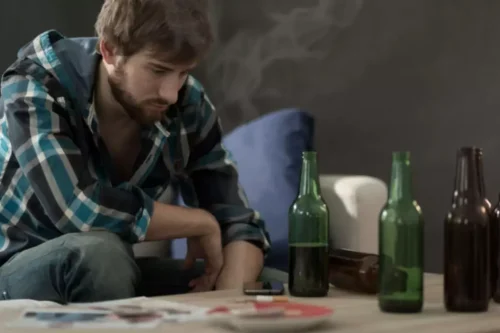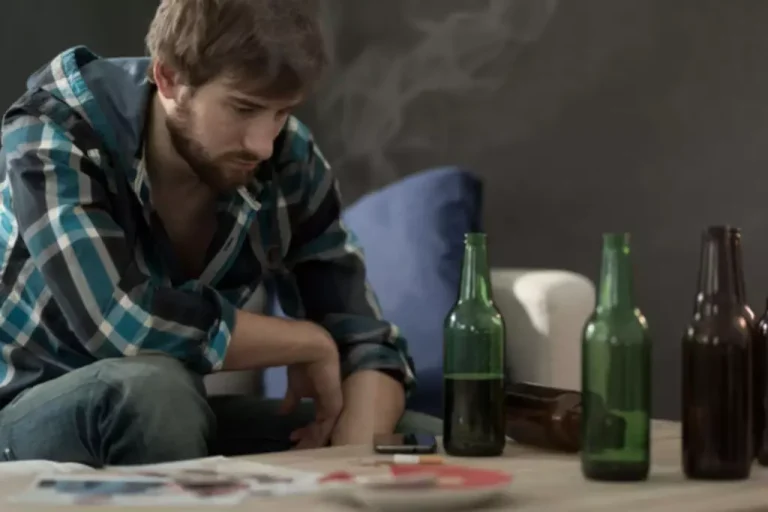Yes, After-Work Drinking Is a Serious Workplace Issue
In many organizations, drinking at work is even encouraged, with some companies proudly promoting their Thursday afternoon beer cart perks for recruitment purposes. If you find that you can’t control your drinking, or know a loved one who is struggling with addiction, know that there is help out there. At AAC, we’re open and committed to providing critical care in a safe environment, even during the ongoing pandemic. If you’re ready to quit drinking and reclaim your life from addiction, call now, or click to chat.
After-Work Drinking and Liver Health
You say alcohol “isn’t even relaxing anymore,” so go on a pilgrimage to find something that is. You deserve a dose of pleasure waiting for you at the end of the day, every day—something therapeutic that whisks you from fatigue to relief, relief to sleep, and sleep to a bright, energetic morning. Sunnyside uses a psychology-based approach to help you drink more mindfully, no matter what your goal is. You’ll get a 100% custom plan, then use daily texts to track your progress and help you stay on target. The pressures on you are likely to persist, and you will continue to need to decompress at night. With all of that being constant, your best bet is to take a look at the ritual—or tool—you’re using to mark that daily transition and blow off steam.
Causes of Alcoholism in the Workplace
The habit of unwinding with alcohol can become a coping mechanism, potentially evolving into dependence. This addiction can strain relationships as individuals may prioritize drinking over spending quality time with family or fulfilling professional commitments. When employees are struggling with alcohol addiction, they should receive professional treatment. Treatment typically begins with medical detox to help patients manage alcohol withdrawal symptoms. shrooms and alcohol Regular after-work alcohol consumption presents a risk not only to physical health but also to mental well-being.
Organizational cultures differ in how they manage social control of drinking norms. In some settings, mechanisms for social control are disabled, while in others, they are enabled, shaping the drinking behaviors of employees. The presence of liquor stores in certain communities, particularly among minority populations, can increase access to alcohol, influencing social drinking habits. Furthermore, cultural factors such as beliefs, attitudes, subjective norms, and expectancies about alcohol use play a critical role in shaping individual and group drinking behaviors. Happy hour has also become a substitute for networking and brainstorming, with a drinker nose third of the American workers surveyed saying that getting drinks after work promotes team bonding. Workplaces that encourage drinking marginalize the many Americans—as many as 30 percent—who don’t drink at all for whatever reason.
It sounds like you’re highly aware of how you feel physically, and that’s a huge asset when you’re trying to change a habit. Alcohol felt like a good stress reliever at first, but now it feels more “gross” than good. It’s making you feel crummy, and you’re craving the energy and clarity you had before this habit began. If you find yourself struggling to manage your drinking after work, it might be time to seek professional help. Once you’re in recovery, your EAP counselor can meet with you and your supervisor to go over your ongoing treatment, job requirements, and if you need work adjustments or close supervision.
Moreover, repeated binge drinking, defined as consuming multiple drinks in a short timeframe, has been correlated with an increased likelihood of developing prehypertension, a precursor to full-blown hypertension. This type of drinking behavior can also produce immediate changes in circulation, heightening the risk of cardiovascular disease in otherwise healthy young adults, as outlined by the American College of Cardiology. When drinking is deeply embedded in a company’s culture, it can become a crutch and a substitute for the very kind of connection that managers hope to foster when they organize happy hours. Carmen Bush, an employee at a tech company in the Bay Area, said her company’s weekly “TGIF” party starts at 4 p.m. “My co-workers would grab six bottles and stake out a table and we would all just hunker down and start pounding it,” she says.
Effective Strategies to Manage After-Work Drinking Habits
The risk of overconsumption in a workplace (or work-related) setting can have serious repercussions for both the individual and their company. drinking when bored The average post-work booze session lasts almost two hours, adding substantially to an already long day on the job. This can contribute to exhaustion, brain fog, and overall lower productivity among workers. Arielle Castillo, a content producer for a soccer club based in Manchester, England, told me the constant drinking and party atmosphere at a former workplace became so relentless and exhausting that she found another job. “It can be really hard to draw boundaries in that environment,” she said, especially when networking and seeming like “one of the guys” centers on alcohol-fueled events.
Alcoholism at Work: Signs, Causes, Effects & Treatment
It’s important to understand personal limits and goals when considering alcohol consumption. Ultimately, it’s about creating a sustainable plan that supports one’s health and happiness, and sometimes, seeking professional guidance or support groups can be a crucial step in this journey. The amount of alcohol and the duration of its use necessary to lead to ALD can vary, but research indicates a threshold of consumption exists above which the risk for liver disease significantly increases.
- The center’s team of professionals works closely with each patient to create and continuously adjust treatment plans that ensure long-term success.
- A 2019 study found that when employers or supervisors initiate drinking events, employees feel obligated to participate.
- Professional treatment programs and support groups can provide the necessary assistance for those struggling with after-work drinking turning into dependence and addiction.
- Furthermore, research has shown that alcohol use during pregnancy is extremely hazardous, leading to developmental and congenital disabilities categorized as fetal alcohol spectrum disorders (FASDs).
- Professional help should be considered if you find yourself needing to drink more to achieve the same level of intoxication or if withdrawal symptoms become apparent.
Recognizing the specific triggers that lead to after-work drinking can help individuals break the cycle by altering their routine to avoid these cues or replace the habit with a healthier activity. Negative work experiences have been linked to heavy drinking and drinking during and after work. This means that factors like toxic work cultures and job dissatisfaction can increase the risk of alcohol misuse among employees. In seeking professional help, it is crucial to consult with a primary care provider or seek referrals to specialists with addiction expertise. Trusted resources include the Substance Use Treatment Facility Locator and reputable organizations such as the National Institute on Alcohol Abuse and Alcoholism (NIAAA) and the Association for Addiction Professionals (NAADAC).
Sober Living, Womens Sober Home
A list of all sober houses in Lowell, Massachusetts is available below. “We stand here now knowing that in just a few days, another nine women will live in a safe, affordable and supportive environment where they can continue their recovery,” Gignac said. In her memory, the Megan House Foundation is opening its second residential sober living facility called Emma’s House, which will provide supportive case management for nine women in Lowell. There, they will work toward independence and their own health for up to 24 months before transitioning to more permanent accommodations. LOWELL — Emma Franchek’s 24 years of life were filled with hardship.
Sober Living Home Operator Information:
Sober living home information is provided by sober house operators. We try to provide current information but cannot monitor every recovery home listing and do not guarantee the accuracy of listings. Sober House Directory helps you find sober houses, structured group homes, and sober living.
We do not show halfway houses, treatment programs, or rehabilitation facilities. We were founded jointly by Review Hope House, an operator of sober houses in Massachusetts, and Vanderburgh Communities, an organization supporting sober living and recovery home operators. We’re expanding across the United States as our resources permit! If you would like to add a listing to our sober house directory, please let us know.
LIV RECOVERY HOMES Womens sober home
- We believe that recovery from substance abuse is a lifelong process rather than a one-time destination.
- “We stand here now knowing that in just a few days, another nine women will live in a safe, affordable and supportive environment where they can continue their recovery,” Gignac said.
- Sober living houses, also called sober homes and sober living environments, are facilities that provide safe housing and supportive, structured living conditions for people exiting drug rehabilitation programs.
- Lowell is home to many organizations serving those in recovery, and many of Lowell’s organizations reach throughout Lowell with addiction recovery resources.
- From left, Jim Franchek, Middlesex District Attorney Marian Ryan, Huntley and state Sen. Ed Kennedy.
- If you would like to add a listing to our sober house directory, please let us know.
LIV RECOVERY is dedicated to providing a safe, supportive, drug and alcohol-free environment for women to build a life of sustained recovery. The journey to recovery requires more than sober homes. In addition to certification information, Sober House Directory provides state-by-state information for recovery resources. For recovery resources in Lowell, Massachusetts, please visit the Massachusetts Sober House Recovery Resources page for more information. Lowell’s community is supportive and encouraging to those in recovery.
Search for Transitional Housing
State Rep. Kate Donaghue, D-Westboro, shared her own personal connection with the epidemic — her only child, Brian, died of an overdose. She offered a moment of silence for him, Emma and all those who lost their lives to drugs. Since then, Ryan said they’ve developed programs for those struggling with substance use disorder, and Emma’s House is one step forward in making a difference. The drug epidemic started taking over Lowell and surrounding communities close to 12 years ago, when Ryan created a task force to combat addiction. Even then, Ryan said they feared the stigma around drug use would prevent any progress to be made. Gorham StreetThis is a great house with a small group of people who really have an incredibly strong “stay sober” attitude.
Lowell’s care providers are educated and empathetic towards recovering addicts. Pamela Huntley, executive director of the Megan House Foundation, cuts the ribbon in front of Emma’s House, the foundation’s newest sober living facility, in Lowell, Aug. 2, 2023. The home will welcome nine young women in their journey to recovery from substance use disorder. From left, Jim Franchek, Middlesex District Attorney Marian Ryan, Huntley and state Sen. Ed Kennedy. Massachusetts sober houses are certified by the Massachusetts Alliance for Sober Housing, or MASH.
‘Believe in recovery’: Sober living facility opens in Lowell, honoring former resident
The Sudbury native spent time in prison, experienced homelessness and attended several detox and rehabilitation programs across Massachusetts, none of which seemed to worked. LIV RECOVERY is a privately owned structured sober living home for women. Located in the Belvidere neighborhood of Lowell Ma, Review Review Hope House just 30 minutes outside of Boston .
Sober living houses, also called sober homes and sober living environments, are facilities that provide safe housing and supportive, structured living conditions for people exiting drug rehabilitation programs. Sober houses serve as a transitional environment between such programs and mainstream society. Sober houses, also called recovery homes or sober living homes, provide housing for men and women in recovery from addiction. Sober houses often serve as a bridge between treatment and independent living and offer affordable rents and a supportive environment for those in recovery from substance abuse. Review Hope House, a supporter of Sober House Directory, builds sober home communities where residents are supported in their recovery journeys. Review Hope House sees a world where every person in recovery has access to a supportive, healthy, and safe home environment built on respect, focused on recovery, and lead by peers.
UK wine industry ‘under siege’ as government prepares to hike alcohol duty

Health care providers diagnose AUD when a person has two or more of the symptoms listed below. AUD can be mild (the presence of two to three symptoms), moderate (the presence of four to five symptoms), or severe (the presence of six or more symptoms). See the recommended questions to ask addiction doctors in Step 2. You will not need to ask a board-certified addiction doctor about qualifications. You can focus largely on services offered, availability, costs, and insurance.

Discouraging an Alcoholic from Drinking
- Women for Sobriety – Organization dedicated to helping women overcome addictions.
- Specialists who are board certified have thousands of hours of training and practice.
- Attending meetings, which are held all over the world, allow you to share your experience with others and find strength and hope from them and their experiences.
- Motivational enhancement is conducted over a short period of time to build and strengthen motivation to change drinking behavior.
Once you have interviewed the providers you found, how do you choose? We also offer a way to compare your options and see which one is best. Teens today experiment with alcohol earlier and more often than ever before. They’re more likely to binge drink and more vulnerable to developing an alcohol use disorder than adults. This may be because the pleasure center of a teen’s brain matures before their capacity to make sound decisions. While it’s important to be open and honest about your concerns, you need to remember that you cannot force someone to stop abusing alcohol.
MIDAS SHARE TIPS
Members throughout the world live and stay away from that “first drink” one day at a time. Anyone with a desire to stop drinking is welcome, regardless of race, gender, sexual orientation, religion, income, or profession. You will want to understand what will be asked of you in order to decide what treatment best suits your needs. Currently, there are three medications approved for AUD in the United States, and they are an effective and important aid in the treatment of people with this condition. History and current activities; sharing from groups, service committees, and individual A.A. Anyone with a desire to stop drinking is welcome, regardless of race, gender, sexual orientation, religion, income or profession.
Discuss the issue with your other friends

While someone is seeking treatment for alcohol abuse, you can offer in-person support while they search for the right provider. Your loved one may be worried about issues such as the pain of detox or logistics like childcare when they attend treatment. Ideally, before approaching your loved one with treatment options, you’ve thought through some of these issues. Alcoholics Anonymous® (also known as “AA”) and other 12-step programs provide peer support for people quitting or cutting back on their drinking.
How to Find Quality Alcohol Treatment

You may also want to see if other family members and friends want to be involved. This can depend on several factors, such as how serious the situation is or how private the person may be. Choose the right time to have this important conversation. Have the conversation in a place where you know you’ll have quiet and privacy. You’ll also want to avoid any interruptions so that you both have each other’s full attention.
Search form

There are thousands of these providers nationwide. We’ll show you how to search trusted directories to find some that meet your needs. By searching for all three types, you can compare all the options. Below are samples of e-Health tools developed with NIAAA funding. Each has research base that demonstrates its potential to help people cut down or quit drinking. https://ecosoberhouse.com/ Long-term recovery is challenging and your friend will need continued support.
- They can be particularly useful in locations with few addiction health professionals.
- But it’s important to remember that you still have a major impact on the choices that your child makes, especially during their preteen and early teen years.
- Keep up with work, appointments, and social plans.
- The most important thing is to let them know that you care and that you’ll be there when they need your support.
- NIAAA supports and conducts research on the impact of alcohol use on human health and well-being.
- Medications can also deter drinking during times when individuals may be at greater risk for a return to drinking (e.g., divorce, death of a family member).
- The three-step road map outlined in the NIAAA Alcohol Treatment Navigator offers expert guidance to focus and support your efforts.
- But in the long run denying it will only bring more harm to you, your loved one with the problem, and the rest of your family.
- We strive to create content that is clear, concise, and easy to understand.
- Getting your friend to accept professional help is a huge step but it is only the beginning.
If the person does have an alcohol problem, the best thing you can do is be open and honest with them about it. Hoping the person will get better on their own won’t change the situation. There may also be recovery resources available in your community. Through it how to treat alcoholism all, however, be sure to take care of yourself and your mental health.
Starting with a Primary Care Provider
Thousands of providers nationwide offer evidence-based treatment for alcohol use disorder. We’ll show you how to search trusted directories for specialists near you. Suggest social activities that don’t involve drinking. While you can’t shelter your loved one from situations where alcohol is present, you can avoid drinking with or around the person. When you spend time together, try to suggest activities that don’t involve alcohol. Residential treatment or “rehab” facilities provide intensive treatment for alcohol abuse or addiction.
What is Cognitive Dissonance and How Do You Reduce it?

When someone tells a lie and feels uncomfortable about it because he fundamentally sees himself as an honest person, he may be experiencing cognitive dissonance. That is, there is mental discord related to a contradiction between one thought (in this case, knowing he did something wrong) and another (thinking that he is honest). A person who feels defensive or unhappy might consider the role cognitive dissonance might play in these feelings. If they are part of a wider problem that is causing distress, people may benefit from speaking with a therapist. Avoiding, delegitimizing, and limiting the impact of cognitive dissonance may result in a person not acknowledging their behavior and thus not taking steps to resolve the dissonance.

What is cognitive dissonance and how do you reduce it?
- This became known as the “free-choice paradigm.” If the items were basically equal, people would begin to invent “advantages” for the one they chose.
- This is often very difficult, as people frequently employ a variety of mental maneuvers.
- This may be accomplished most readily in the area of health, but can also affect the political and economic realms as well.
- In order to live our lives with purpose, clarity, and passion, we need these tools to understand when we’re losing sight of our internal compass.
- In addition to the cognitive dissonance we are experiencing, “True Lies” and “False Truths” are oxymorons that we frequently hear during political and public health conflicts we are experiencing.
- This might involve discussing various aspects of your life, from relationships and career choices to personal values and habits.
In the laboratory and in the field, we have studied the subtleties and nuances of the dissonance process. It is appropriate that we accelerate the application of dissonance to processes and institutions that can provide real help to people. Not everyone practices what they preach—and that could trigger poor cognitive dissonance and addiction mental health. Cognitive dissonance is the psychological conflict a person experiences when they hold simultaneous conflicting attitudes, beliefs or behaviors. If left unchecked, it could lead to anxiety and mental tension, and you might even try to rationalize harmful actions. The prediction that people can experience dissonance vicariously is based on a combination of dissonance theory with social identity theory (McKimmie, 2015; Tajfel, 1970; Tajfel & Turner, 1986; Hogg, 2001).
Cognitive Dissonance Therapy: A Beacon of Hope

This internal conflict can fuel the cycle of disordered eating and make recovery challenging. Cognitive dissonance plays a role in many value judgments, decisions, and evaluations. Becoming aware of how conflicting beliefs impact the decision-making process is a great way to improve your ability to make faster and more accurate choices. Psychologist Kia-Rai Prewitt, PhD, explains how to manage this feeling of discomfort, what’s known as cognitive dissonance, and how it can affect your mental health and other relationships when left unchecked. But you can feel caught off guard when those values and beliefs are shaken by social pressures, the presence of new information or having to make a rushed last-minute decision. Sometimes, we can even get caught up in behaving or reacting a certain way that doesn’t necessarily align with how we really feel — and then we end up feeling lost.
Decisions

It led to innovations in understanding people’s motivations for the attitudes they hold, the behaviors they engage in and the preferences they express. It also led to innovations in leveraging the dissonance process to help people with important practical considerations such as improving their mental and physical health. A series of studies that I was involved in with my colleague Mark Zanna took a different approach. We asked participants to ingest a pill as part of what they thought was a completely separate study. We had people engage in a counterattitudinal essay writing task and told half of them that any arousal they might be experiencing was due to the pill. We reasoned that if attitude change is based on the arousal caused by inconsistent cognitions, then those participants who could blame their arousal on the pill would not be motivated to change their attitudes.
Lifestyle Quizzes
It can become problematic if it leads you to justify or rationalize behaviors that could be harmful. Or you may get caught up in trying to rationalize the dissonance to the point of stressing yourself out. You start going to bed earlier and get up with enough time to work out. It’s hard at first, but instead of feeling guilty when you see the gym keychain, you feel proud of yourself.

Since they work all day in an office and spend a great deal of time sitting, it is difficult to change their behavior. Cognitive dissonance can be caused by feeling forced to do something, learning new information, or when faced with a decision between two similar choices. Sometimes, new information leads to cognitive dissonance, but that also allows you to take new actions you may not have thought about taking before. Simply being more aware of how your thoughts and actions fit together can help you better understand what’s important to you, even if you don’t eliminate the dissonance. You tell yourself it’s OK since you’re taking care of your health in other ways. You still feel guilty, though, because you know it’s important to be active.
Valdosta’s Leading Mental Health Center
Many programs offer evening, night, and weekend services so that clients may receive treatment on their own schedule. Outpatient treatment modalities typically include addiction counseling, recovery-focused life skills training, and/or medication assisted treatment (MAT). Many programs also provide step-down care, including partial hospitalization (PHP), intensive outpatient (IOP), and standard outpatient services, to align with clients’ evolving needs. Tucked in Southern Georgia, Greenleaf Behavioral Health Hospital is 113-bed facility for treating mental health issues and substance use. They provide intense outpatient programs (IOP), inpatient hospitalization, partial hospitalization (PHP), and partial hospitalization for children, teenagers, and adults.
- Most of The staff is lazy and takes a long time to do anything, whenever I ask them for something they give it to me late or don’t give it to me at all.
- Outpatient rehab enables clients to receive addiction treatment while continuing to work and reside at home.
- Located in Valdosta, GA, Greenleaf provides the tools needed for lasting recovery.
- Sharing your insights and experiences can help others learn more about this rehab center.
- Drug addiction is the excessive and repetitive use of substances, despite harmful consequences to a person’s life, health, and relationships.
Elderly program
A person with multiple mental health diagnoses, such as addiction and depression, has co-occurring disorders also called dual diagnosis. Anxiety is a common mental health condition that can include excessive worry, panic attacks, physical tension, and increased blood pressure. Members commit to a higher power, recognize their issues, and support each other in the healing process.
Valdosta’s Leading Psychiatric Hospital & Treatment Center for Adolescents & Adults
One aspect of this rehab that I thought was notable was that they have separate units for substance abuse versus mental health. That way you know you’ll be with peers who are going through similar journeys. I also think it’s great that they accept walk-ins here so you can get the help you need right away and don’t have to get a referral. Provided for individuals who have completed IOP or other treatment/recovery programs who would benefit from ongoing support to help maintain a recovery environment. Help individuals and families seeking treatment by sharing your first-hand experience with this treatment provider.
It has been proven clinically effective for those who struggle with out-of-control emotions and mental health illnesses like Borderline Personality Disorder. For clients who are struggling with understanding addiction and its effects on their life. Opioids produce pain-relief and euphoria, which can lead to addiction. This class of drugs includes prescribed medication and the illegal drug heroin. Some traumatic events are so disturbing that they cause long-term mental health problems.
She repeatedly violated me, twisting my nipples and committing other unspeakable acts when she believed no one was watching. This level of abuse was not only physically painful but also deeply humiliating and degrading. The behavior I witnessed and experienced at GreenLeaf is beyond unacceptable it’s atrocious. The staff’s actions have left me with lasting trauma, and I am determined to seek justice for the abuse I endured.No one should have to go through what I did. It’s crucial that these individuals are held Chelsea House Review Review accountable for their actions.
Program for women
Experiential therapy is a form of therapy in which clients are encouraged to surface and work through subconscious issues by engaging in real-time experiences. Experiential therapy departs from traditional talk therapy by involving the body, and having clients engage in activities, movements, and physical and emotional expression. This can involve role-play or using props (which can include other people).
If you crave a medication, or regularly take it more than directed, you may have an addiction. Hallucinogenic drugs—like LSD—cause euphoria and increased sensory experiences. Drug addiction is the excessive and repetitive use of substances, despite harmful consequences to a person’s life, health, and relationships. A leading healthcare provider serving over 100 million Americans as one of the largest insurance companies in the country. NOT ENOUGH AT ALLLadies and gentlemen, do not go to behavioral hospitals or anger management cause that’s not good at all. Please shut it down immediately because they don’t need any medications as much as possible.
Insurance
The Joint Commission, formerly known as JCAHO, is a nonprofit organization that accredits rehab organizations and programs. Founded in 1951, the Joint Commision’s mission is to improve the quality of patient care and demonstrating the quality of patient care. To transform the behavioral healthcare experience through a culture of safety, professionalism, reliability, teamwork, job knowledge, customer service and results. All Alcohol or Drug Services are also offered individual counseling as needed.
Some PHPs are residential (patients sleep on site) and some are not, so patients sleep at home. PHPs can last from 1-6 months, and some offer transportation and meals. 12-step programs are addiction recovery models based on Alcoholics Anonymous (AA).
